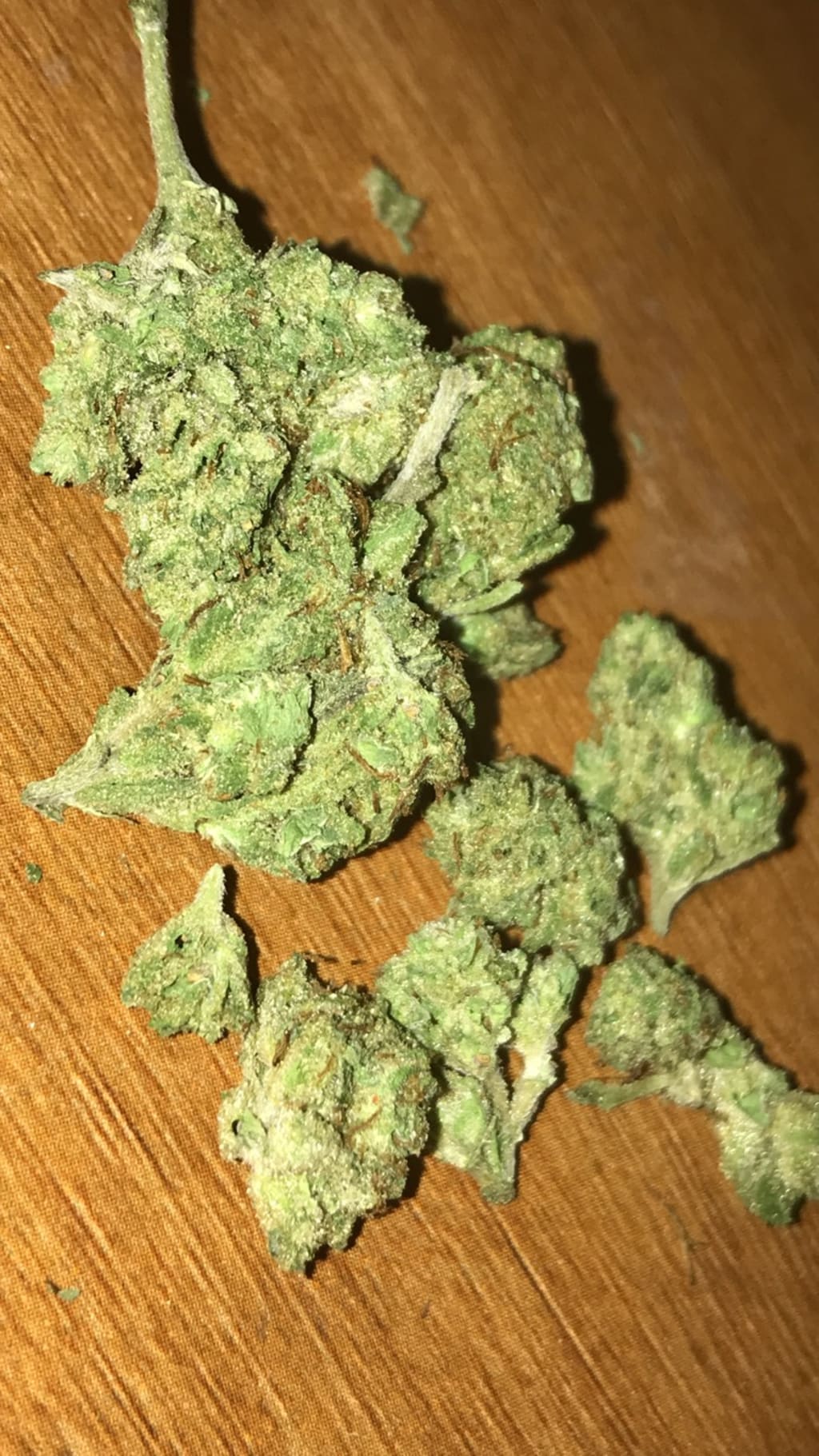The Truths About Cannabis
The Pros and the Cons to Both Recreational and Medicinal Legalization of Cannabis

The topic of marijuana has been talked about for years. Whether it being the lasting effects, the types, or the medical benefits, there is a resounding discussion on marijuana anywhere that you go. Many people support the topic of using marijuana, although a fair amount of people disagree with the drug. Some states have already legalized marijuana, but is it truly needed and helpful for society?
It is incredibly hard to understand the many topics on marijuana without actually knowing what it is. Marijuana, also known as cannabis, is dried up leaves, seeds, and stems from the plant known as “Cannabis Sativa” (Legg). Cannabis can be smoked, eaten, vaped, and even applied through oils. Twenty-three states in the United States have made marijuana legal for medicinal purposes (Carroll). It has been found that marijuana can help deal with certain types of physical pain and side effects of medication.
What is most debatable and what is talked about the most when discussing marijuana is the effects it produces. Cannabis includes over 400 chemical ingredients which include THC and Vitamin A (Procon). THC, the main toxin in cannabis, triggers receptors in the brain which release the drug Dopamine. Besides for THC, marijuana has also been found to relax and cause a euphoric feeling (Legg). Many known effects of cannabis are altered senses, slower body movements, anxiety, and in some cases, dizziness. Research has found that marijuana can lower ten point pain ratings by as much as a full point when it is smoked (Carroll). The trace of cannabis can stay in the body for weeks, even after the effects are gone (Balko). The effects of marijuana are different for everybody who uses it. Many doctors prescribe medical marijuana to smoke because it only takes a couple minutes to reach the brain and body, giving quicker relief than prescription medications (Legg).
The public view on marijuana has changed over centuries. It used to be a hated drug by most of the United States and other countries. However, Marijuana is now supported by more than 60 percent of the public (Ingraham). Even though it is supported by the public in vast majority, Cannabis is known by the Drug Administration Agency as a schedule one drug, meaning it has no medical value (Carroll). This means that the DEA classifies a drug which is used by more than 23 countries for medicine, as a drug which has no medical value. People say that the DEA and it’s members are bias toward the use of the drug and that they are going against the public's preference. Ironically, the only place in the US that is allowed to grow marijuana for research purposes is the University of Mississippi (Johnson).
Hundreds of research has been created which explains both the pros and the cons of marijuana. One argument is the point that marijuana being legal causes drivers to become dangerous when driving under the influence of the drug. There is evidence which supports this statement based on research. According to a study by the BMJ, people under the influence of cannabis are much more likely to be in a car accident than people who are sober (Legg). The problem with this conflict is that we can not accurately know whether or not a person has smoked cannabis that day because the trace of the drug can stay in your system for multiple days.
Another known argument toward the drug is that it can provide harmful cancers. The Cancer Research Foundation has found that males who smoke or consume cannabis have a much larger chance of developing testicular cancer (Legg).
In all types of drugs there is the one classification of addiction and becoming dependant on the drug. The Drug Awareness Foundation found that around nine percent of people who use marijuana, become addicted to it (Johnson). It has been questioned that this percentage should not be looked to as important because the addiction percentages of many other legal things are much higher than those using cannabis.
As shown, there is plenty of evidence which explains as to why marijuana has bad effects. Yet, there is also mountains of research which supports the use of marijuana and its benefits. For example, researchers found that in people suffering from chemotherapy when taking marijuana, around 47 percent of people saw no vomiting (Carroll). This shows that cannabis helped 47 percent of people with chemotherapy and the harsh side-effects. This is why many states are now using marijuana as a pain reliever.
Many support medical marijuana but do not support it for recreational use. They say that there is no need for marijuana unless you are medically inclined needing it, but no matter what use is still going to be high. Researches at the University of Mississippi found that deaths from painkillers are much less in states with recreational marijuana (Carroll). Studies have also shown that eight of the ten states where cannabis is legal for recreational use, saw a decrease in teen drug use shortly after the drug became legal for normal and everyday use to the public. This is a major factor in the legalization arguments which say that everyone will use it.
Many doctors and physicians support marijuana. The California Medical Association are one of the mass groups of doctors who have called for full legalization of cannabis (Ingraham).
Marijuana has also been found to improve lung health over time. Researchers tested 5,000 adults for their lung function over a 20 year span and found that cannabis users actually showed an increase in lung capacity (Welsh). Many people worry that if they smoke marijuana for medical purposes, it will cause damage to their lungs, yet studies have found that it does not, in any way, impair lung function. Tobacco, which is legal everywhere in the US, actually causes more problems with lungs than cannabis does (Welsh).
Glaucoma which is the disease that causes pressure in the eyeball affects millions of people around the world, but studies show marijuana can treat it. Studies by the National Eye Institute saw that when people smoked marijuana, it decreased pressure in the eye in normal patients, and patients with Glaucoma (Welsh).
The most important evidence toward marijuana is that in multiple studies, cannabis was found to relieve pain. As stated before, marijuana can lower pain as much as one point on a ten point scale. With the effects being much faster than prescription drugs, many states look to the drug for its medical value. Despite this, the DEA continues to classify marijuana as a drug that “Has no medical value.”
Medical marijuana has and will be argued for years to come. For the time being, many activists are fighting to have marijuana legal in all states in the US. The amount of evidence for both sides are substantial yet the pros to medical marijuana are much larger. It has been discussed for years and it has been a huge milestone throughout history.
Works Cited
Balko, Radley. “Since Legalization, highway fatalities in Colorado are at near historic lows.”
The Washington Post, 5 August 2014, www.washingtonpost.com/news.
Carroll, Aaron. “How ‘Medical’ Is Marijuana.”
The New York Times, 20 July 2015, www.nytimes.com/2015/07/21/upshot/.
Ingraham, Christopher. “More and more doctors want to make marijuana legal.”
The Washington Post, 15 April 2016, www.thewashingtonpost.com/medical
Johnson, Megan. “8 Facts You Might Not Know About Marijuana.”
US Health News, 1 July 2010.
Legg, Timothy. “Marijuana Facts, Effects, and Hazards.”
Medical News Today, 8 September 2016,
Nirappil, Fenit. “Black lawmakers push bills to diversify medical marijuana industry.”
The Washington Post, 27 January 2016, www.thewashingtonpost.com/articles
“Did you known this about medical marijuana?” Procon.org, 19 April 2013.
Welsh, Jennifer. “23 Health Benefits of Marijuana.”
Business Insider, 20 April 2014.






Comments
There are no comments for this story
Be the first to respond and start the conversation.